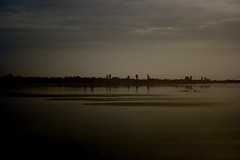 Time for lesson number two in our DSLR 101 series! Our topic today? You may have heard of it, it’s a little thing called ISO.
Time for lesson number two in our DSLR 101 series! Our topic today? You may have heard of it, it’s a little thing called ISO.
What?
ISO is traditionally a measure of film speed; basically how sensitive a roll of film is to light. Obviously if you’re using a DSLR you’re not using film but your camera still has ISO settings. Instead of film it’s a reference to how sensitive the camera’s image sensor is to light. ISO settings can vary greatly but most cameras have at least 100, 200, 400, 800, and 1600. The lower the number the less sensitive the sensor is to light.
Why?
Although lower ISOs are usually desirable (leave your camera on Auto settings and it’ll choose 100 or 200 most of the time) to give you clear, sharp photos there are times when a higher ISO can be useful.
Choosing a higher ISO allows you to use a higher shutter speed or smaller aperture. This is especially useful for shooting in low light, particularly shooting action in low light (for example indoor sports events or concerts). It also comes in handy in places like museums and art galleries where use of flash and/or tripods may be prohibited, or in any low light situation when you don’t have a tripod available!
Higher ISOs cause a grainy effect, which, while we often want the clearest photos possible, can sometimes be desirable to create a certain look in an image.
How?
You can choose your ISO setting in the menu of most DSLRs, check your manual if you can’t find the ISO option in yours.
Extra tip
Try taking the same shot at several different ISO settings so you can get a feel for what each different setting produces.









0 comments